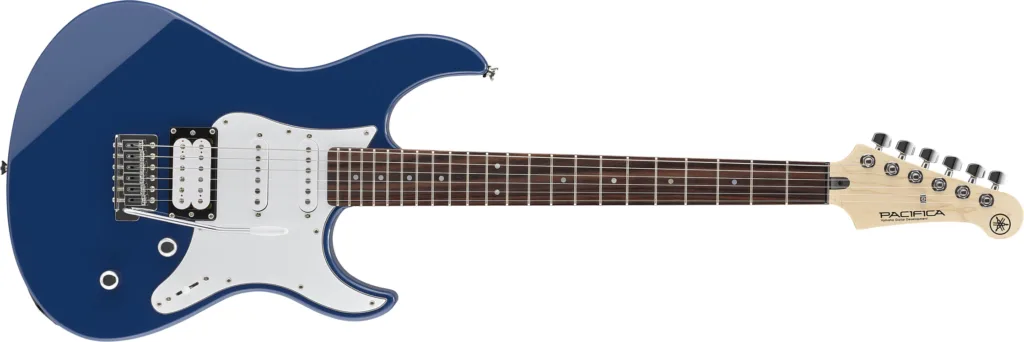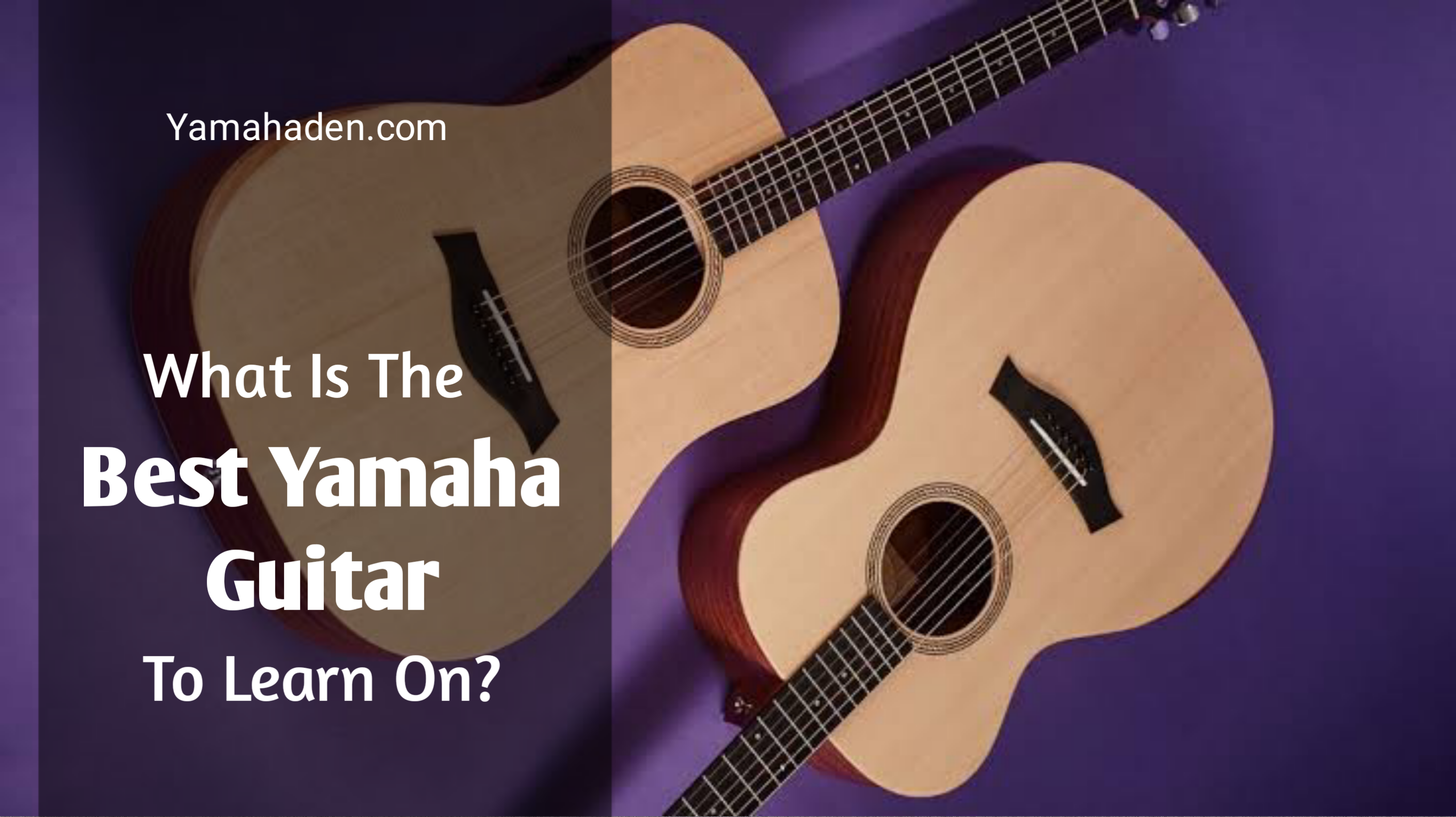Are you thinking about picking up the guitar and wondering which Yamaha model is best for beginners? Trust me, I understand how confusing it can be with so many options out there. When I first started playing, I struggled to find the perfect guitar that suited my needs and budget. But after years of research and experience, I’ve narrowed down the top Yamaha guitars for beginners.
In this article, we’ll dive into our top picks for the best Yamaha guitar to learn on. We’ll cover everything from sound quality and price range to features and overall playability. By the end of this article, you’ll have all the information you need to make an informed decision on which Yamaha guitar is right for you. So let’s get strumming!
So, What is the best Yamaha guitar to learn on?
The best Yamaha guitar to learn on is subjective, as it ultimately depends on personal preference and playing style. However, our top picks for beginners include the Yamaha FG800 acoustic guitar and the Yamaha Pacifica PAC112V electric guitar.
The Yamaha FG800 is a classic dreadnought-style acoustic guitar that offers a rich tone and easy playability. It also has a solid spruce top, which produces a warm and balanced sound ideal for strumming or fingerpicking. Additionally, its slim neck design makes it comfortable for beginners to hold and play.
On the other hand, the Yamaha Pacifica PAC112V is an excellent choice for those interested in learning how to play electric guitar. It features two single-coil pickups and one humbucker pickup, allowing for versatile sound options. The smooth maple neck also makes it easy for beginners to navigate frets and chords.
Both of these guitars are affordable options with high-quality construction from a reputable brand like Yamaha. Ultimately, it’s important to try out different guitars before making a decision to find the one that feels most comfortable and suits your musical goals. Happy playing!
Understanding the Features of a Good Beginner’s Guitar
When you’re just starting out with learning guitar, picking the right one can make all the difference. A good beginner’s guitar should be comfortable, easy to play, and not too expensive. One important feature to look for is a smooth neck that’s easy to grip; this helps your hands move freely across the strings. The action—the distance between the strings and the fretboard—shouldn’t be too high either, making it easier to press down on each string without straining your fingers.
Another crucial aspect involves choosing between acoustic or electric guitars. An acoustic guitar offers simplicity: it’s ready to go as soon as you are and doesn’t require an amp or extra equipment. On the other hand, an electric guitar often has lighter strings and thinner necks, which might make it easier for beginners who are still developing finger strength. Whichever type you choose:
- Look for durable materials.
- Avoid fancy features that inflate cost unnecessarily.
- Consider sound quality but don’t obsess over it at first.
Ultimately, what matters most is that you feel excited about playing every day!
Delving into Acoustic Models: Yamaha’s Top Picks for Beginners
Exploring the world of acoustic guitars can feel like stepping into a magical realm, especially if you’re just starting out. Yamaha has long been renowned for crafting instruments that offer quality and reliability without breaking the bank. For beginners, finding something that’s not only affordable but also enjoyable to play is crucial. Luckily, Yamaha excels in this area with a range of models that are perfect for novice players.
One standout option is the Yamaha FG800. This guitar is celebrated for its rich tone and sturdy build. It features solid spruce tops which provide excellent resonance, making every strum sound full-bodied and warm. Moreover, the comfortable neck design allows easier finger placement, reducing fatigue during those long practice sessions.
Another great pick is the Yamaha FS800, an excellent choice for players with smaller hands or those who prefer a more compact body style. Despite its size, it delivers impressive sound clarity and depth thanks to its scalloped bracing pattern.
- Rich Tone: Solid spruce top ensures vibrant sound.
- Comfort: Thoughtfully designed neck eases playability.
- Diversity: Options like FG800 and FS800 cater to different preferences.
Whether you choose one over another depends on your personal comfort and musical needs but either way,
you’ll be getting an instrument capable of growing along with you on your musical journey.
Read also: What guitar does Johnny Depp have
Exploring Electric Options: Yamaha’s Best Starter Guitars
When it comes to finding the perfect starter guitar, Yamaha has some incredible electric options that cater to beginners. A standout is the Yamaha Pacifica Series, known for its versatility and high-quality build. These guitars come with a sleek design that’s visually appealing and comfortable to play. The Pacifica’s lightweight body makes it easy for new players to handle, while its smooth neck feels just right under your fingers. The sound? Rich and vibrant, thanks to the quality pickups that can handle everything from bluesy riffs to crunchy rock chords.
Another great choice is the Yamaha Revstar Series. This line features retro-inspired aesthetics alongside modern engineering marvels—perfect for budding musicians who want something stylish but reliable. One of the most appreciated aspects is their ergonomic design: whether you’re sitting or standing during practice sessions, these guitars remain balanced and easy on your hands. Beginners will also love how responsive they are; even light strumming produces clear tones without much effort. And with several models offering built-in features like coil-splitting options, you get a taste of tonal variety right out of the box!
- Lightweight bodies
- Smooth necks
- Responsive pickups
- Ergonomic designs
- Tonal variety features
So if you’re searching for an excellent beginner’s electric guitar, Yamaha undoubtedly offers some top-notch choices worth exploring.

Comparing Price Points and Value for Money in Yamaha Beginner Guitars
When diving into the world of Yamaha beginner guitars, it’s essential to look at how much you’re getting for your dollar. Yamaha’s reputation for quality is well-known, but understanding their range of prices can help you make a smart choice that best fits your needs. For around $150-$200, you’ll find models like the Yamaha F325D and C40II. These guitars might have basic finishes and lack some frills, but they deliver reliable performance which is perfect when just starting out.
Stepping up slightly in price to about $300-$400 introduces options such as the FG800 or APX600. Here, you start to notice improvements—like better sound quality and more aesthetically pleasing designs—with solid tops instead of laminate ones creating richer tones. The extra cash gets you features that enhance playability and durability:
- Built-in tuners
- Preamp systems
- Smoother fretboards
The beauty lies in choosing what matches your budget while giving you maximum value without breaking the bank.
So whether you’re strumming around a campfire or practicing scales in your room, picking the right model makes all the difference. It doesn’t take an expert ear to appreciate how even small investments can elevate your playing experience with a Yamaha guitar.
You may also like: How much is a concert piano worth
Evaluating the Playability and Comfort of Various Yamaha Guitars for New Learners
When starting out with a Yamaha guitar, comfort and playability are crucial factors that can make or break your learning experience. A beginner-friendly model like the Yamaha FG800 has a smooth action and is light on the fingers, making it ideal for those who are just getting started. The neck’s shape fits comfortably in small hands, while its matte finish ensures you won’t get sticky palms during extended practice sessions. The ergonomically designed body helps distribute weight evenly across your lap or shoulder, reducing fatigue.
Another excellent option is the Yamaha Pacifica series electric guitars. These instruments feature a slim profile that’s easy to handle even if you’re on the shorter side or have smaller arms. With their versatile sound range—thanks to multiple pickup settings—you can experiment with different genres without much hassle. Additionally, well-placed controls let you tweak tones effortlessly as you learn what each dial does. As an added bonus, lightweight materials mean less strain on your back and shoulders during long jam sessions.
- Smooth Action: Ideal for beginners’ fingers.
- Ergonomic Design: Comfortable for longer playtime.
- Slim Profile: Easy handling.
- Tone Controls: Simple experimentation.
- Lightweight Build: Less physical strain.
In summary though it may seem minor initially focusing on comfort and playability will greatly enhance your journey into music-making
Making the Right Choice on Your First Yamaha Guitar
Choosing your first Yamaha guitar can be both thrilling and overwhelming. Yamaha offers a diverse range of guitars, each with unique features tailored to different playing styles and preferences. When making this decision, consider what type of music you enjoy most. Are you drawn to the soulful strumming of an acoustic or the electrifying riffs on an electric? Yamaha’s FG series is perfect for those who love warm, rich tones in their acoustics, while the Pacifica series caters to aspiring rock stars eager for that classic electric feel.
Beyond sound, think about comfort and playability. Finding a guitar that feels good in your hands is crucial since you’ll want something comfortable as you hone your skills. Take note of factors like neck width and body shape; these can significantly affect how easy it is to play chords or practice scales. It’s also wise to set a budget but remember that investing slightly more now might save money later by avoiding frequent upgrades or repairs.
- Acoustic lovers: Check out the FG800.
- Electric enthusiasts: Give the Pacifica Series a try.
Lastly, don’t forget about aesthetics—after all, you’ll be spending plenty of time looking at your instrument! Whether it’s sleek black or natural wood finish you’re after, choosing one that visually inspires you can make all the difference in motivating regular practice sessions.

